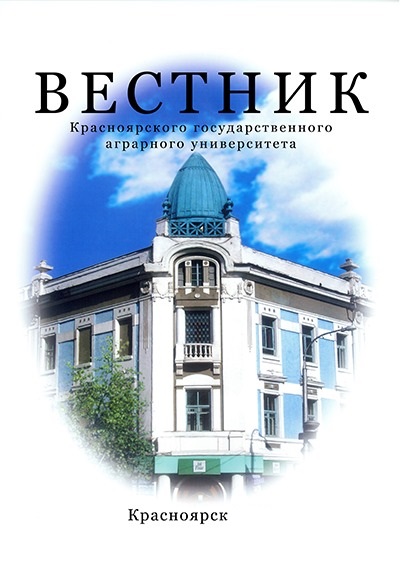The research of the influence of the Japanese sea cucumber muscular tissue on the sausage quality characteristics is conducted. It is established that introduction of sea cucumber in the amount of 3% of minced meat weight doesn’t have negative influence on the organoleptic characteristics of the product. The study of the sausage rheology indicates to the stability of the experimental sample structure. Microbiological studies demonstrate the possibility of the storage period extending of the sausages with sea cucumber in comparison with the control samples.
Japanese sea cucumber, sausages, organoleptic characteristics, rheology, microbiological assessment, storage period
1. Webb G.P. An Overview of Dietary Supplements and Functional Food. In Dietary Supplements and Functional Foods. - 1st ed. - Blackwell Publishing: Oxford, UK. - 2006. - R. 1-35.
2. Shahidi F. Nutraceuticals and functional foods: Whole versus processed foods // Trends Food Sci. Technol. - 2009. - V. 20. - P. 376-387.
3. Hu S.-Y. Food Plants of China//Chinese University Press: Hong Kong, China. - 2005. - P. 275-278.
4. Venugopal V. Marine Habitat and Resources. In Marine Products for Healthcare: Functional and Bioactive Nutraceutical Compounds from the Ocean // Ed.; CRC Press Taylor &Francis Group: Boca Raton, FL, USA. - 2009. - P. 23-50.
5. Guerard F, Decourcelle N., Sabourin C. Recent developments of marine ingredients for food and nutraceutical applications // A review.J. Sci. Hal. Aquat. - 2011. - V. 2. - P. 21-27.
6. Blunden G. Biologically active compounds from marine organisms // Phytother. Res. - 2001. - V. 15. - P. 89-94.
7. Kosoy V.D., Malyshev A.D., Yudina S.B. Inzhenernaya reologiya v proizvodstve kolbas. - M.: Kolos, 2005. - 261 s.
8. Kurkina E.A., Sadovoy V.V. Perspektivy ispol'zovaniya hitozana pri proizvodstve myasnyh produktov // Myasnaya industriya. - 2006. - № 6. - S. 36-38.
9. Hlebnikov V.I., Dmitrienko S.Yu., Kuznecova T.G. Biologicheskaya dobavka «Kal'marin» uluchshaet potrebitel'skie svoystva myasnyh polufabrikatov // Myasnaya industriya. - 2004. - № 6. - S. 38-39.
10. Wen J., Hu C., Fan S. Chemical composition and nutritional quality of sea cucumbers //J. Sci.Food Agric. - 2010. - V. 90. - P. 2469-2474.
11. Savvateeva L.Yu. Perspektivy kompleksnogo ispol'zovaniya goloturiy dal'nevostochnyh morey // Rybnoe hozyaystvo. - 1987.- № 1. - S. 72-74.
12. Beauregard K.A., Truong N.T., Zhang H. The detection and isolation of a novel antimicrobial peptide from the echinoderm, Cucumariafrondosa // Adv. Exp. Med. Biol. - 2001. - V. 484. - P. 55-62.
13. Althunibat O.Y., Ridzwan B.H., TaherM. In vitroantioxidant and antiproliferative activities of three Malaysian sea cucumber species // Eur. J. Sci. Res. - 2009. - V. 37. - P. 376-387.
14. Aminin D.L., Chaykina E.L., Agafonova I.G. Antitumor activity of theimmunomodulatory lead Cumaside // Immunopharmacol. - 2010. - V. 10. - P. 648-654.
15. Shul'gina L.V., Blinov Yu.G., Zagorodnaya G.I. Obosnovanie tehnologii kislomolochnyh produktov na osnove gidrolizata iz kukumarii // Izv. TINRO. - 1997. - T.120. - S. 188-192.
16. Drozdova L.I., Yakush E.V., Eroshkina M.Ya. Issledovanie processa geleobrazovaniya v sisteme rybnogo, soevogo i molochnyh belkov // Izv. TINRO. - 1997. - T. 120. - S. 244-253.
17. Gomez-Guillen M.C., Martinez-Alvarez O., Montero P. Functional and thermal gelation properties of squid mantle proteins affected by chilled and frozen storage// J. Food Sci. - 2003. - V. 68. - № 6. - P. 1962-1967.
18. Hamann D.D. Rheology as a means of evaluating muscle functionality of processed foods // Food technology. - 1988. - № 6. - P. 66-70.










